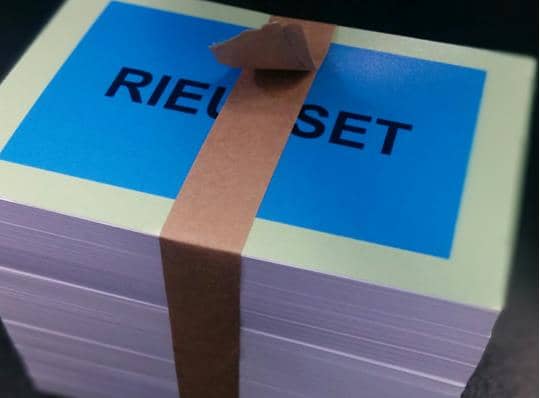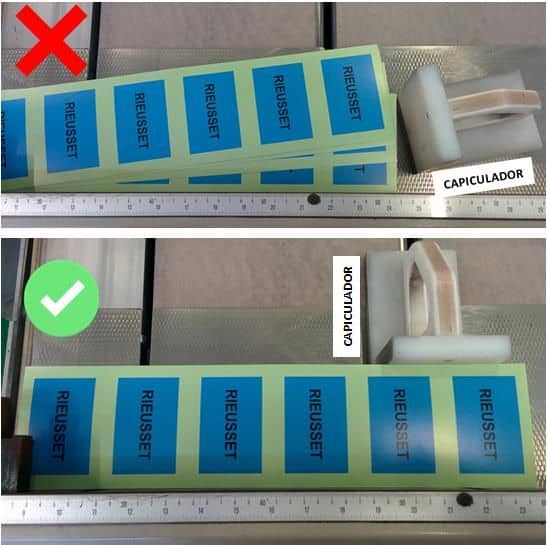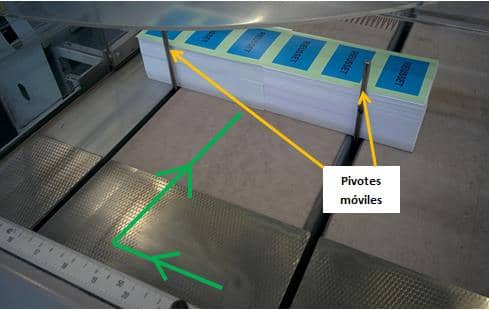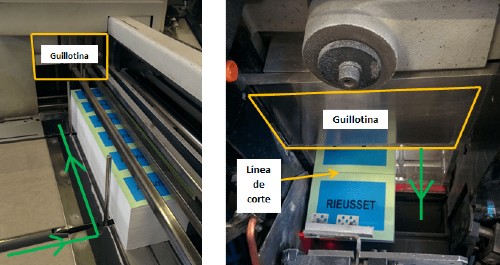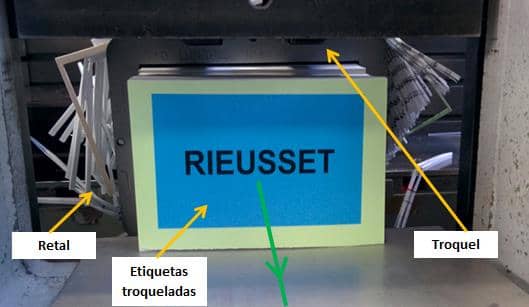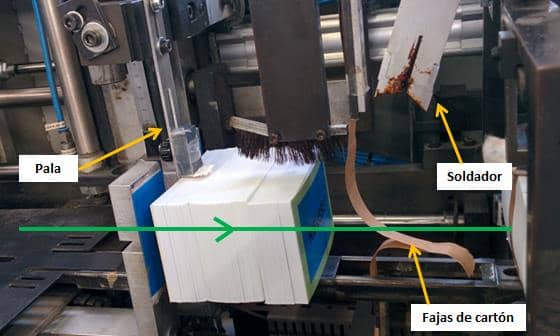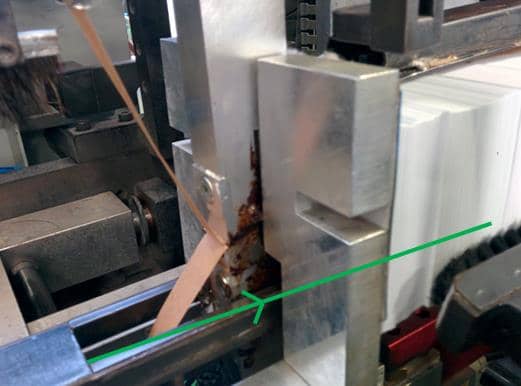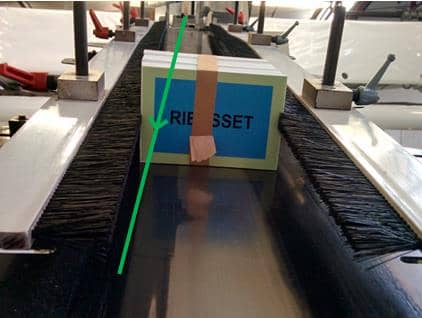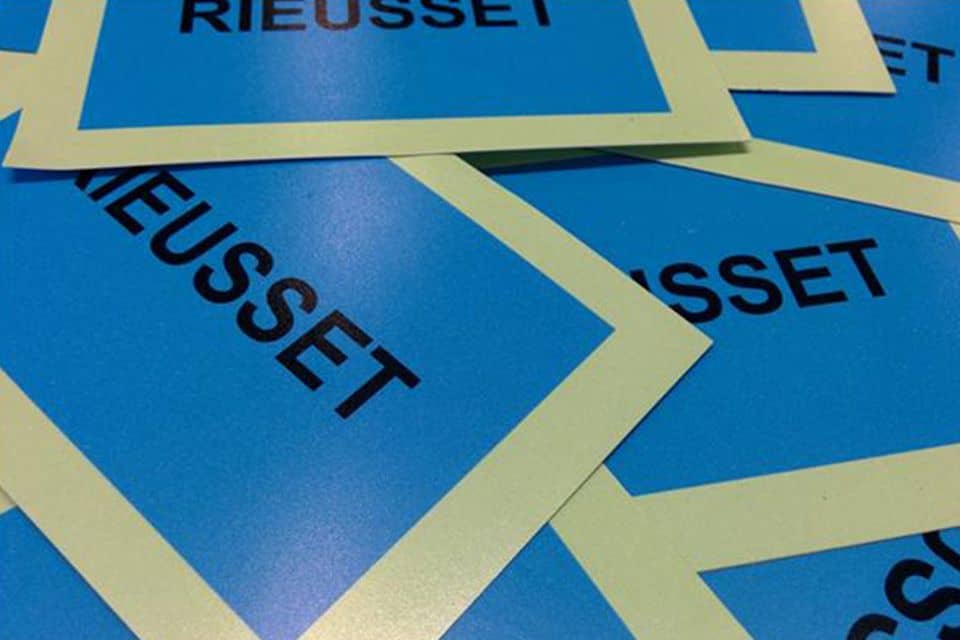
18 Sep How to die cut a label?
We are now at the point of having in our hands the Rieusset label which we have been “making” throughout the various posts: first we engraved 3 cylinders which we then placed into the printing press in order to print our labels, and then we cut these into strips making stacks of 1,250 units.
The objective of this process is to produce packs of labels so that our final customers may stick these on their bottles. We supply unit packs of 1,250 labels that are placed into boxes, these boxes are transferred onto pallets, and finally they are sent to the respective factories.
What’s left to do now? Well, give the label its final shape. And how will we do that? Using a die cutting machine. There are many types of die cutters, but they all have the same purpose: cutting or trimming a material with a die so that it has a desired shape.
Our die cutters are made up of 6 clearly separate parts:
- Strip collection table
- Guillotine
- Transport arm
- Die cutting area
- Cardboard detection cell
- Banding area
The circuit traveled by the labels has been marked with green lines. It will be marked this way in all the images in order to be able to identify the path at all times.
At this point we are dealing with stacks of 1,250 strips of labels, as we explained in our previous post “How to ream a label?” An important detail we cannot fail to mention at this point is there is a white strip of cardboard underneath each stack of strips of labels, with the exact same size as a strip. The function of this cardboard is that of separating and giving rigidity to the stack.
The pallet with the stacks of strips is placed to one side of the die cutter. Each stack of strips is put onto the collection table (1) and an aligning device (capiculador) is used to make sure that all strips are perfectly aligned. This step is crucial since if they are not totally aligned the labels will not be cut correctly.
A series of movable pivots take the strip and transport it to the end of the table.
Next, the strip moves perpendicularly for the distance of one label so that it can be cut by the guillotine (2) thus making individual stacks. And so on until all stacks of strips are cut along the cutting line, and the same process is repeated with all the stacks in that production.
The transport arm (3) is in charge of transporting the recently cut individual stack to the die cutting area (4).
The die has been previously mounted on the die cutter with a special support. In the case of our label, it is rectangular in shape. The four edges of the die are extremely sharp and if we were to slide a finger along one of them we would cut ourselves.
Interestingly, depending on the type and shape of the material, one die can cut more than 125 million labels!
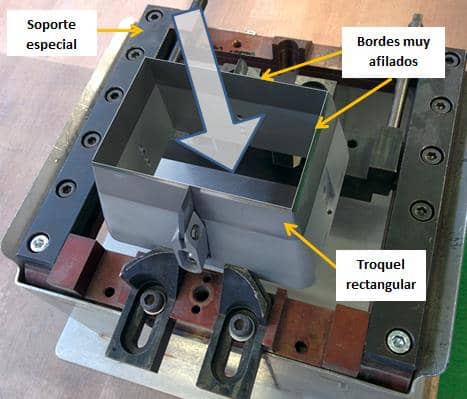
View of the support and the die. The stack of 1250 labels goes through it as indicated by the white arrow.
The stack arrives at the die cutting area, and there a hydraulic piston, with enough force to lift a 4×4, pushes the stack against the die.
The die cut labels come out with the desired final shape. The scrap falls into a cage where it is stored and ultimately recycled.
Once the pack has been cut it has to be separated in order to be banded. The cardboard detection cell (5) is in charge of separating the packs. The process is simple: the cell detects the cardboard, and then goes up and pushes the stack up approximately one centimeter.
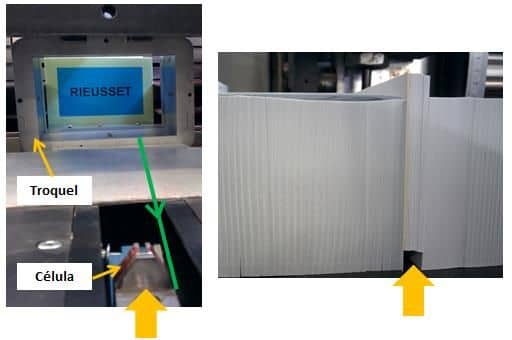
In the image on the left you can see the cell and in the one on the right the part of the pack that has been pushed up
Next, a metal slat separates the pack from the top, pushing the cardboard, and takes it to the banding area (6).
Finally, a thin cardboard sleeve is applied to the stack, using two thin cardboard rolls and a high temperature welder. The purpose of the banding is to keep the pack of 1,250 labels securely held together.
When the packs are finished, they travel down the final ramp, where they are supervised one by one by our officials and finally placed into boxes. In one hour we can produce more than 1,000 packs! Once the pallet is full of boxes, it is shrink wrapped and it’s ready to be sent to the customer.
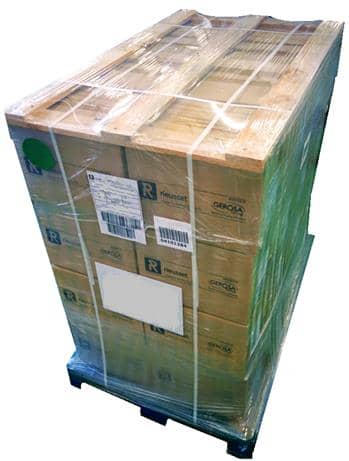
Pallet ready to be sent to the customer with its bar codes in order to guarantee a correct traceability
Did you enjoy this?
This post closes the series of “So how is a label produced in Rieusset?” The purpose behind this has been to show you how a label is made in Rieusset.
We have tried to explain this as clearly as possible although we know that some of the concepts when they are described in a post can be a little complicated and difficult to understand. Please don’t hesitate to write us a comment directly below this post with any doubts or needs for clarification – surely we will be able to solve them!
| We Manufacture: | Meet Rieusset: |



